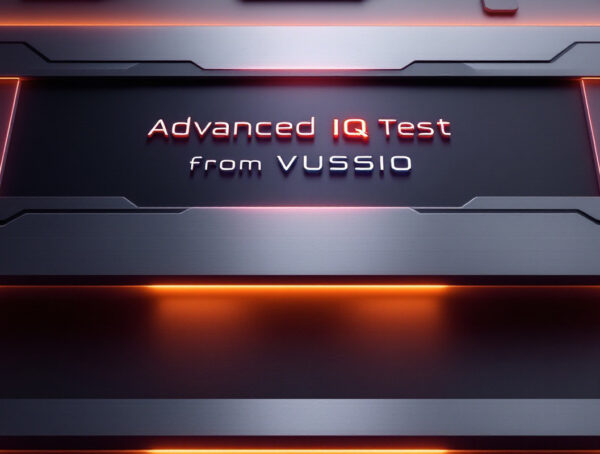TLDR: The belief that cats and dogs have evolved to thrive on store-bought pet food is a myth. Evolution operates on timescales far beyond the century-long history of commercial pet food. While convenient and endorsed by veterinarians, these foods are often optimized for industrial efficiency rather than biological needs, contributing to health issues in pets. Pet owners should critically evaluate their pets’ diets with an understanding of evolutionary biology, not marketing claims.
- Evolutionary Timescales: Cats and dogs haven’t evolved in the last century to digest highly processed pet food. Their biology remains suited for raw, protein-rich diets.
- Veterinary Endorsements: Veterinarians often recommend commercial food due to industry-funded education and standardized convenience, not because it’s the optimal diet.
- Processed Pet Food: Most commercial pet foods prioritize efficiency over nutrition, using by-products and fillers cooked at high temperatures that strip nutrients, compensated by synthetic additives.
- Health Impacts: Diets high in carbs, low in moisture, and rich in synthetic additives contribute to rising pet health issues, mirroring human struggles with processed foods.

Let’s talk about something that’s been gnawing at the corners of pet owner debates for years: Are store-bought pet foods really better for our cats and dogs because their stomachs have evolved to digest them?

At first glance, it seems logical. After all, commercial pet foods are designed specifically for pets, right? They’ve got all those vitamins and minerals listed on the bag, and veterinarians often recommend them. But let’s dig deeper.
The Origin of Pet Foods
Commercial pet food as we know it has only been around for about a century. Before that, dogs and cats ate scraps, hunted prey, or were fed raw meat. So, can a species’ digestive system evolve significantly in just a few generations to prefer kibble over natural foods? Evolution doesn’t quite work that fast.
The Origin of the Myth
The myth starts with a seductive premise: modernity brings progress. Store-bought pet food is the result of careful scientific formulation, and we’re told it’s nutritionally superior to anything else we could possibly feed our pets.

After all, it’s endorsed by veterinarians, backed by regulatory standards, and fortified with every vitamin and mineral known to science. But when we scratch beneath the surface, we find an evolutionary mismatch that the narrative doesn’t account for.
Evolution Doesn’t Move at Market Speed
Let’s address the central claim: that cats and dogs have “evolved” to thrive on commercial pet food. This is, in a word, nonsense. Evolution doesn’t work on a human timescale, and it certainly doesn’t work on a corporate one. Dogs (Canis lupus familiaris) are descended from wolves, and their digestive systems remain remarkably similar. Likewise, cats (Felis catus) are obligate carnivores, biologically engineered to consume raw meat—not grains, not fillers, and certainly not highly processed kibble.
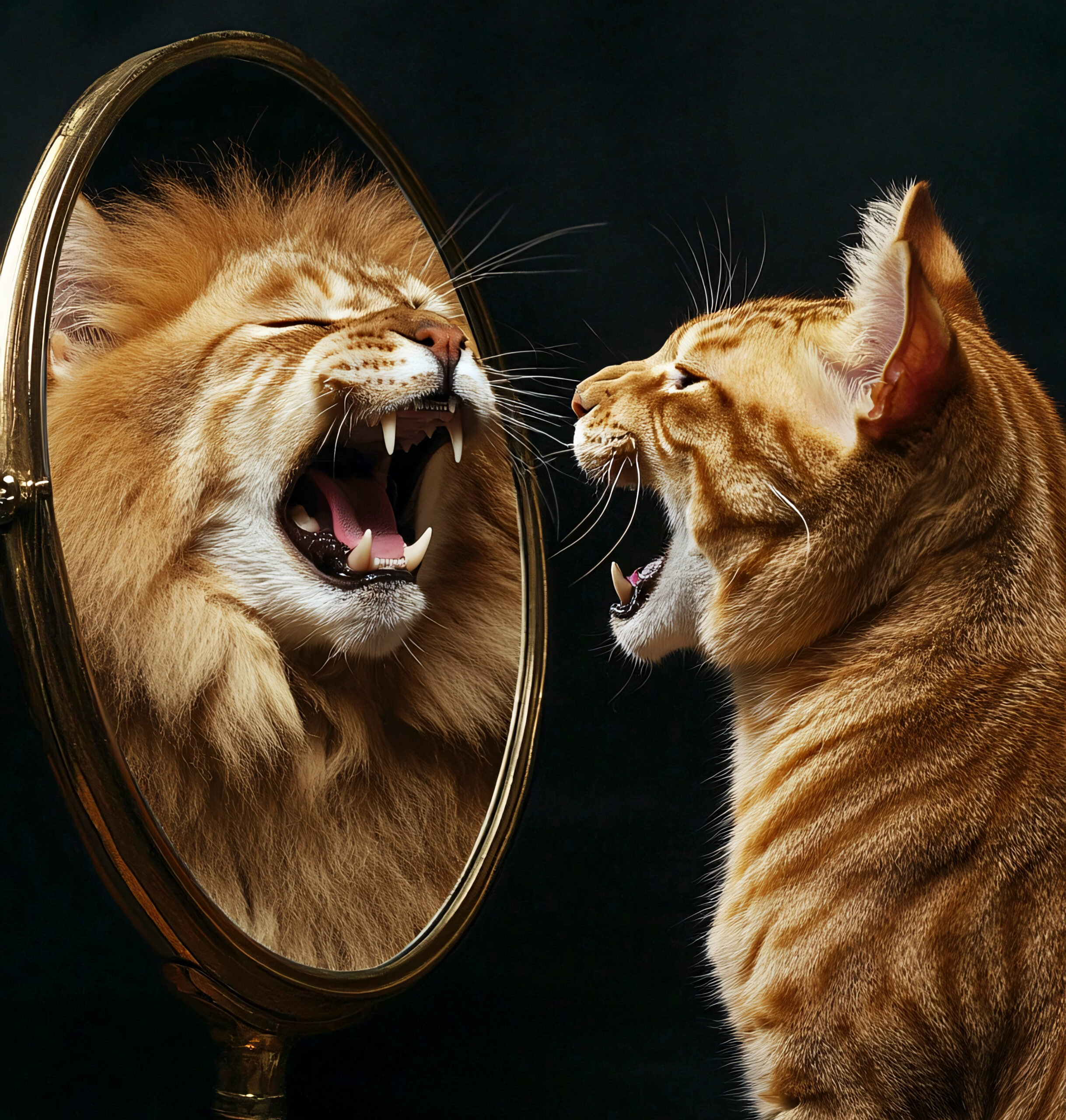
The introduction of commercial pet food less than 100 years ago is a blink of an eye in evolutionary terms. To suggest that our pets have adapted to thrive on these foods is to misunderstand how evolution operates. A hundred years of kibble doesn’t overwrite tens of thousands of years of evolution.
Why Do Veterinarians Recommend It?
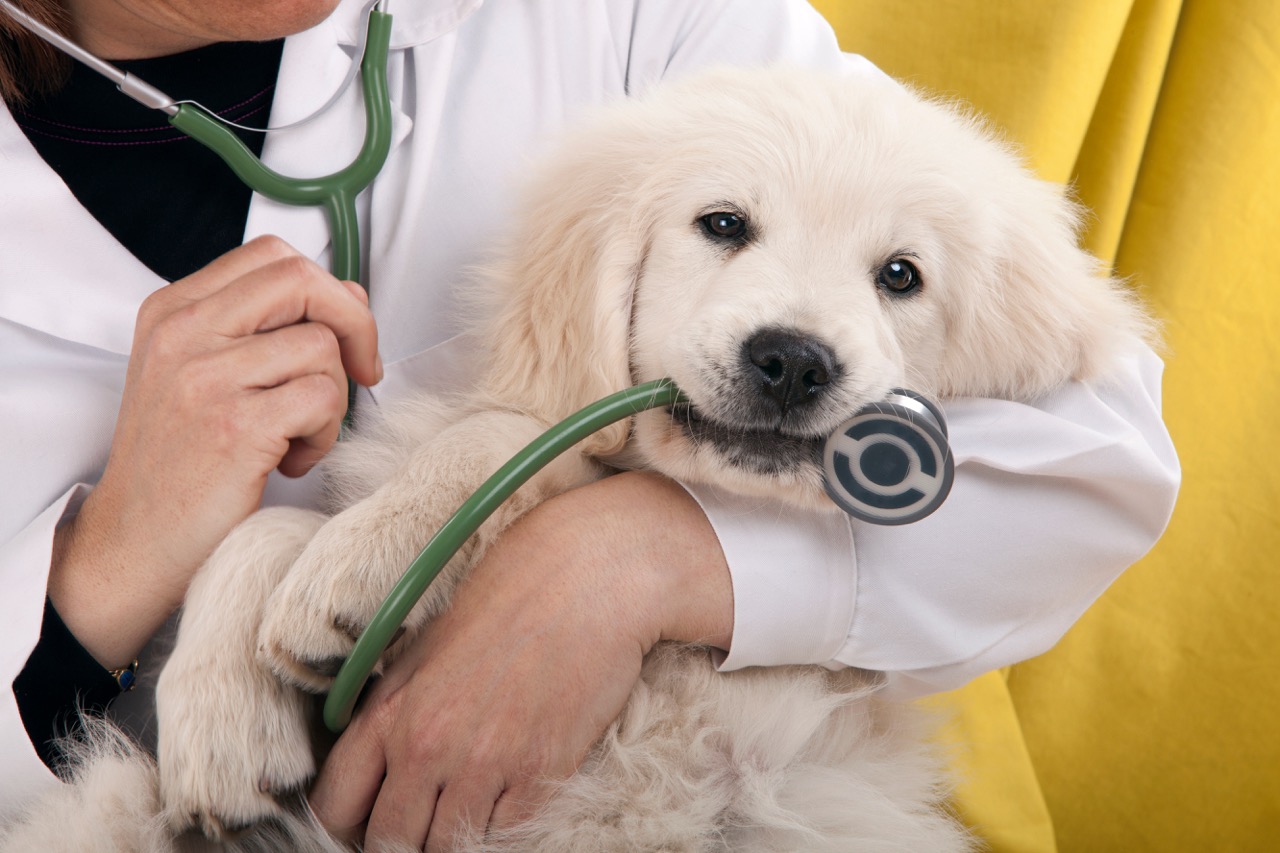
- Education and Industry Interlock: Veterinary education is often subsidized by pet food companies. Nutritional courses in veterinary schools frequently rely on materials provided by these corporations. The result? Veterinarians emerge from their training with a framework that leans heavily on the commercial pet food model.
- The Convenience Economy: Veterinarians, much like physicians, operate within systems of efficiency. Recommending a standardized, commercially available diet simplifies the complexities of dietary discussions with pet owners. It’s a prepackaged solution, both literally and figuratively.
- The Regulatory Mirage: Organizations like the Association of American Feed Control Officials (AAFCO) establish minimum nutritional standards for pet foods. But “minimum” is not synonymous with “optimal.” These standards ensure pets survive—not necessarily that they thrive.
The Processed Food Problem
So let’s talk about pet food; or, more specifically, processed pet food. It’s designed not for biological perfection but for industrial efficiency. The ingredients?
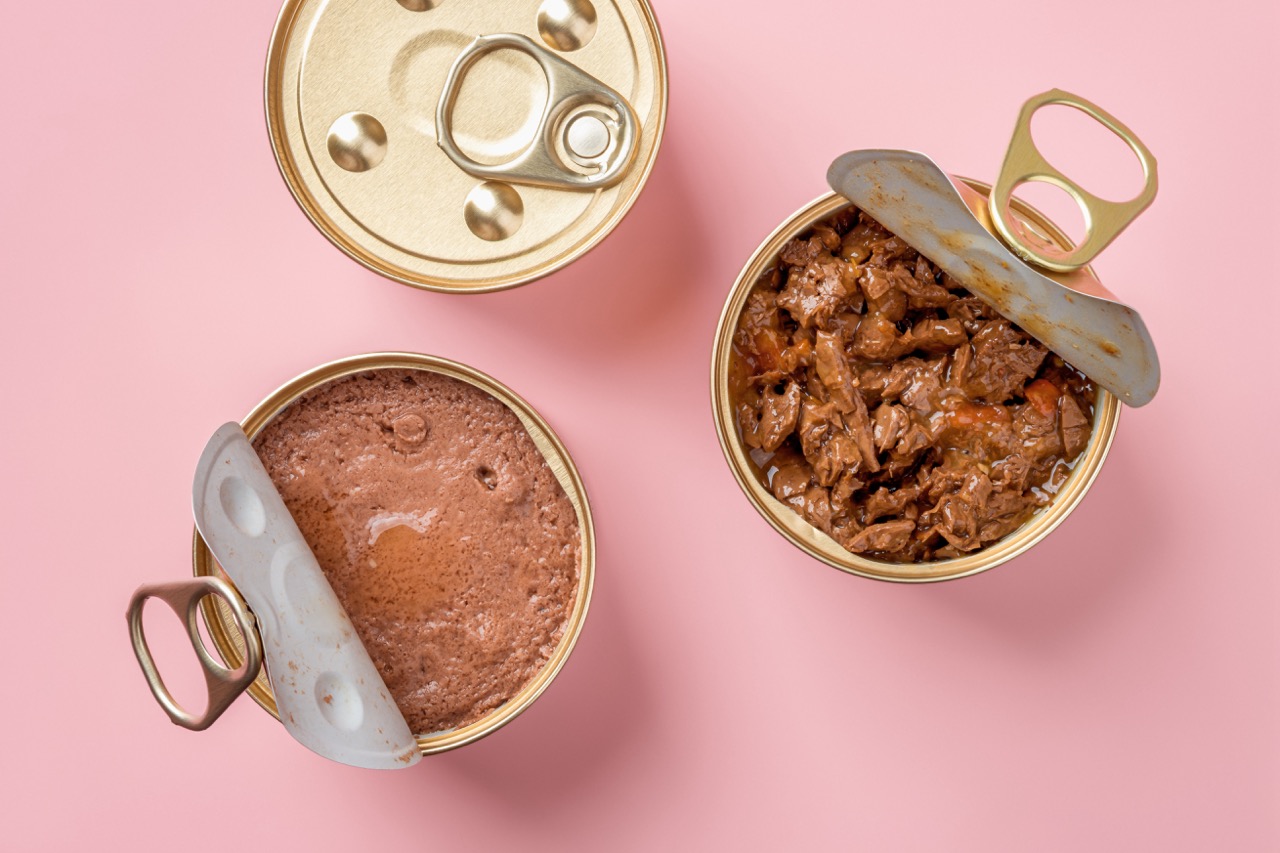
Meat by-products, grains, and fillers. They’re cooked at high temperatures, which destroys many of the natural proteins and nutrients. But don’t worry, the manufacturers add synthetic vitamins and minerals to make up for it. The result? A food that’s “complete,” but only in the way a multivitamin is complete. It’s functional but far from optimal.
Human Foods That Are Harmful to Pets
If you do choose to feed your pet human food, it’s important to understand that some common foods can be harmful to them. While fresh, whole foods like real meat often provide better nutrition than processed pet food, not everything on your plate is safe. Pets are biologically suited for meat-based diets, but their systems can’t process certain ingredients that are harmless to us. Knowing the difference is key to keeping them healthy. Let’s explore the foods they should avoid.
For Dogs: The Friendly Carnivores with Hidden Vulnerabilities
Dogs have a remarkable ability to process a variety of foods, but there are key exceptions that could lead to severe health consequences:
- Chocolate: While a treat for us, chocolate contains theobromine, a compound dogs metabolize poorly. The result? Vomiting, seizures, and in extreme cases, death.
- Grapes and Raisins: Harmless to humans but mysteriously toxic to dogs, causing kidney failure in certain individuals. Scientists still don’t fully understand why.
- Onions and Garlic: These seemingly harmless kitchen staples damage red blood cells in dogs, leading to anemia.
- Xylitol (Artificial Sweetener): Found in sugar-free gum and baked goods, this chemical causes a rapid insulin release in dogs, leading to hypoglycemia and liver damage.
- Cooked Bones: Unlike raw bones, cooked bones can splinter, posing a serious choking hazard or causing internal injuries.
For Cats: The Obligate Carnivores with Unique Needs
Cats, unlike dogs, are obligate carnivores designed to thrive on a meat-heavy diet. This unique biology makes them particularly sensitive to certain foods:
- Dairy Products: Despite the stereotype of cats lapping up milk, many are lactose intolerant, leading to digestive upset.
- Raw Fish: Contains thiaminase, an enzyme that breaks down vitamin B1 (thiamine), a nutrient cats need to maintain healthy neurological function.
- Onions and Garlic: Toxic to cats as well, these can cause oxidative damage to red blood cells, resulting in anemia.
- Alcohol: Even a small amount can be lethal, leading to liver damage and central nervous system depression.
- Dog Food: Yes, dog food. While it’s not immediately toxic, it lacks the taurine, arachidonic acid, and high protein levels cats need to stay healthy.
The Health Mismatch
Pets today face a growing epidemic of diet-related health problems, like obesity, diabetes, kidney disease, and dental issues; and the timeline matches eerily well with the rise of commercial pet foods. These products, often high in carbohydrates, low in moisture, and packed with synthetic additives, place a chronic strain on systems that evolved to thrive on raw, high-protein, high-fat diets.
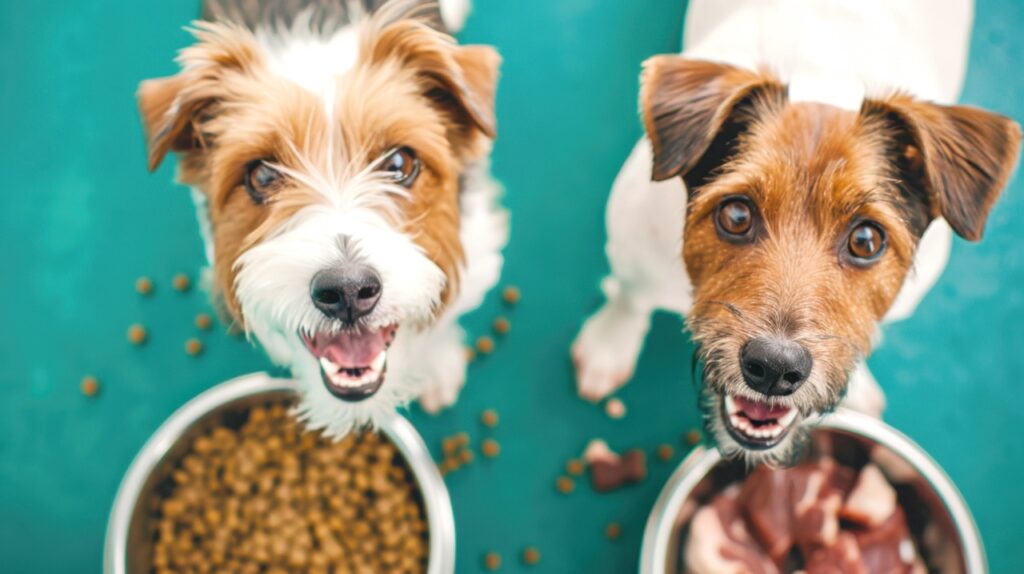
Sound familiar? Humans are facing the same crisis. Just as processed pet foods create mismatched diets for cats and dogs, our reliance on processed, calorie-dense, nutrient-poor foods has contributed to rising rates of obesity, diabetes, and metabolic diseases. For cats, naturally designed to get their water from prey, dry kibble causes constant low-grade dehydration. For dogs, primarily carnivorous but capable of digesting small amounts of plants, grains and fillers in their food represent an unnatural, excessive caloric load. Similarly, humans weren’t built to process the excess sugars, refined carbs, and chemical additives of modern diets, yet here we are struggling alongside our pets with a diet far removed from what nature intended.
Unraveling the Illusion: A Call to Rethink
The belief that store-bought pet food represents an evolutionary endpoint is comforting but misleading. It allows us to trust industry convenience and affordability over biological needs. This isn’t evolution, it’s corporate adaptation to human preferences. While this isn’t a condemnation of all commercial pet food or a demand to switch to raw diets, it’s a call to question the narrative we’ve been sold. The idea that “pets have evolved to eat this” is a myth shaped by market forces, not science.

If we truly care for our pets, we must challenge this myth and make informed choices rooted in biology and evolution, not marketing. The responsibility lies with us.
More from Editor Picks
Seeing Faces in Everyday Objects? Here’s What’s Really Happening
Human cognition is both a marvel and a mystery. It is a tool forged in the fires of evolution, honed …
Cartoon Doppelgängers: When Real Life Takes a Detour to Looney Town
Have you ever walked down the street, looked at someone, and thought, “Wait a minute, why does it look like …
Only 1% Get Every Question Right: Are You One of Them?
This quiz doesn’t care about your GPA, your LinkedIn bio, or your self-esteem 💡 It only cares about right answers …











